From the gargantuan structures that date back to the ancient world to the sleek skyscrapers that dominate modern metropolises, architecture has always possessed the ability to amaze, shock and inspire us.
To that end, we’ve curated a lists of some of the most fascinating architectural feats found around the globe.
Keep reading to find out what they are and where to find them.
Neuschwanstein Castle, Schwangau
If you’re thinking “Disneyland”, then you’ve guessed it right – this enchanting Bavarian palace served as inspiration for the famous Sleeping Beauty castle which is found in Disney’s theme parks.
The original one was commissioned in 19th century by Ludwig II of Bavaria, who planned for the castle to be a retreat.
The highly stylistic palace was built in Neo-Romanesque style, which was typical of this period. It might be surprising that the design of the castle was criticized by many architecture contemporaries, however, today the Neuschwanstein represents a prime example of European historicism.
Perched atop of a dramatic hillside above the village of Hohenschwangau, the Neuschwanstein Castle is one of the most popular tourist attractions in the region, drawing over a million visitors each year.
Angkor Wat, Angkor
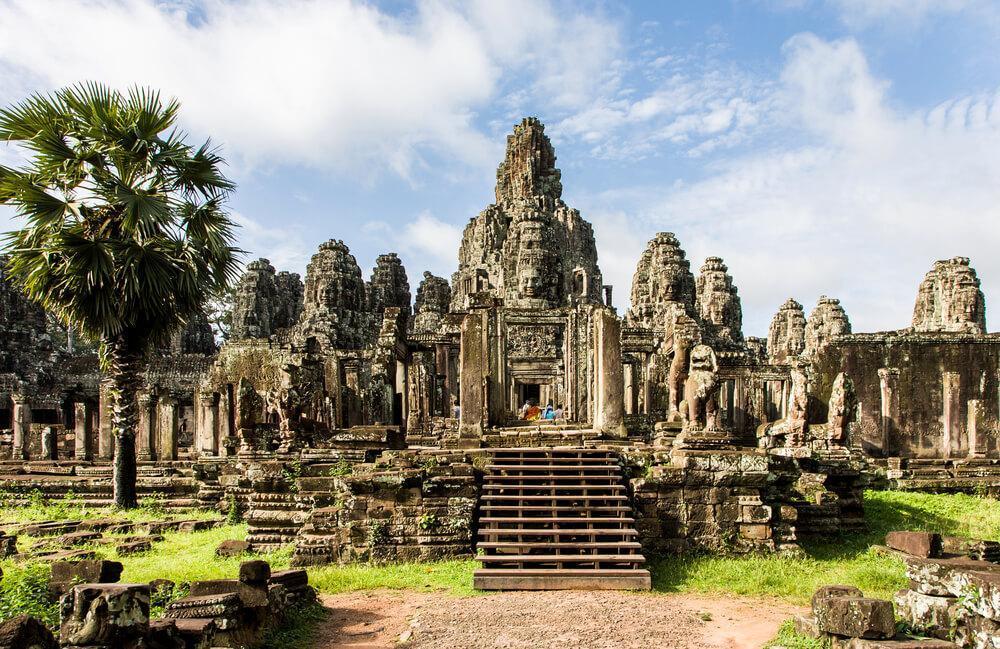
Angkor Wat, the symbol of Cambodia, is the largest temple complex in the world.
Spanning over 400 acres of breathtaking constructions and lush green spaces, this site is the most elaborate example of classic Khmer architecture and the most tangible proof of the Khmer Empire’s enormous power, wealth and innovation.
Angkor Wat was constructed in 12th century on the orders of Khmer King Suryavarman II, who imagined it as an official state temple dedicated to Vishnu and a subsequent mausoleum.
The opulent structures were built mostly using sandstone and laterite; they also feature intricate decorative designs in shape of apsaras (divine nymphs), as well as many narrative scenes depicting ancient epics such as Ramayana and Mahabharata.
The most captivating element of Angkor Wat is undoubtedly the quincunx with a dominant central tower; a construction that symbolizes the five peaks of the sacred Mount Meru.
Sydney Opera House, Sydney
Chances are, when someone says the word “Sydney”, the image that immediately pops to mind is the city’s stunning Opera House.
This magnificent building, which sprawls across the entire Bennelong Point on the Sydney Harbor, was designed by Danish architect Jørn Oberg Utzon.
After the constructions process (which lasted 14 years) was completed, the building was finally inaugurated in 1973 by HRH Queen Elizabeth II.
It has since served as a multi-venue performance center for concerts, theater shows, comedy, talks and tours.
Perhaps the most striking feature of Australia’s world-famous building are the so-called “shells”, large concrete panels that form the roof of the building.
Gateway Arch, St. Louis
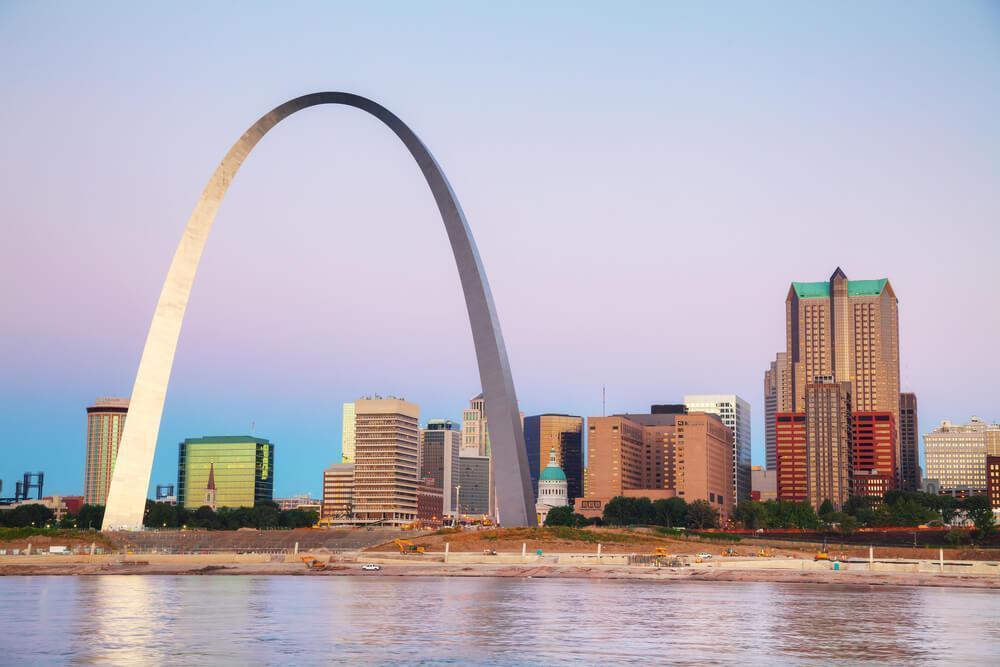
Towering over the city of St. Louis, the Gateway Arch is an emblem of the State of Missouri and the tallest man-made monument in the West.
The 192-meter-tall stainless steel construction was designed by Finnish American architect Eero Saarinen. Its intent was to commemorate Thomas Jefferson and highlight the importance of St. Louis in the westward expansion in the United States.
The construction was completed in 1965 and the monument was opened three years later.
Today, the Gateway Arch is part of the Jefferson National Expansion Memorial, and contains a visitors center that allows curious minds to ride all the way up to the observation deck in an enclosed tram.
Colosseum, Rome
The most famous building to hail from Ancient Rome, the Colosseum is nothing short of an architectural wonder.
Nestled in the central district of the Italian capital, this impressive amphitheater dates back to the 1st century AD, when Rome was ruled by Emperor Titus.
It was built using travertine stone that was brought in from Tivoli via roads made specifically for this purpose.
During the ancient times, this arena used to host all kinds of public events, including gladiatorial contests, theater performances and battle reenactments.
The Colosseum’s oval is 527 meters in circumference and was able to hold between 50,000 and 80,000 people, making it the largest amphitheater ever constructed.
Dongdaemun Design Plaza, Seoul
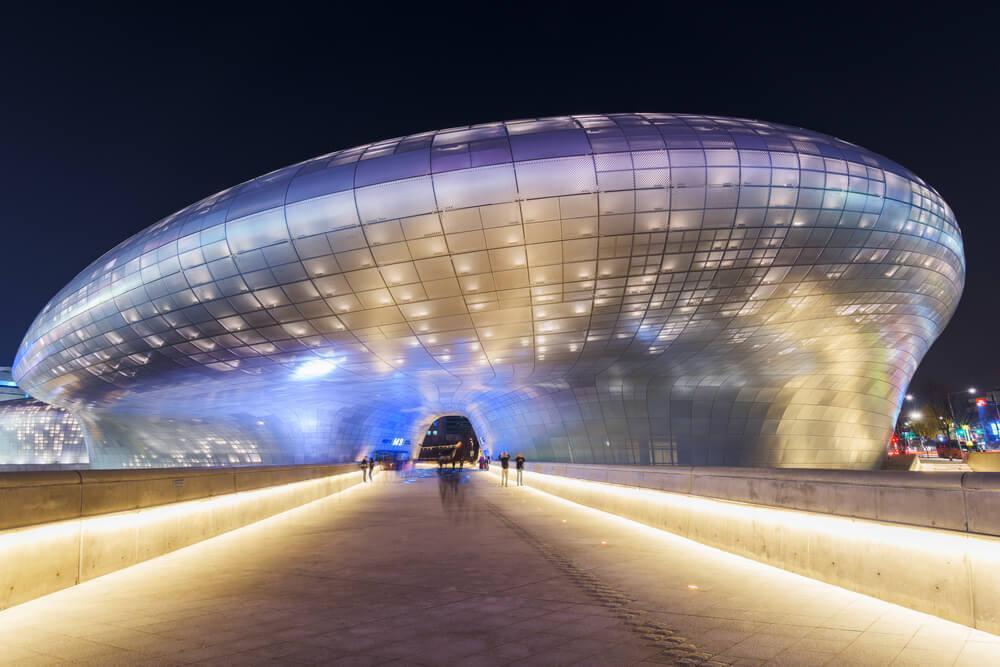
CJ Nattanai / Shutterstock.com
This modern edifice, located in the boisterous shopping area of Dongdaemun, features an eye-catching neofuturistic design characterized by smooth surfaces, curved forms and materials such as steel and aluminum.
Dongdaemun Design Plaza, a cutting-edge construction made out of 45,000 aluminum panels, a plaza and a landscaped park, was designed by the renowned architect Zaha Hadid, who envisioned the project as a fluid, continuous interplay between architecture and nature.
The bustling art hub hosts art exhibitions, fashion shows, forums and other cultural events.
The DDP (as it’s known among Seoulites) is Korea’s most instagrammed location, which is a testament to its impeccable, mesmerizing aesthetics.
Flatiron Building, New York City
NYC is known for its many dizzying skyscrapers that form the city’s unique skyline.
One of the most architecturally intriguing ones is the Flatiron Building, a triangular structure that rests at the intersection of 5th Avenue, Broadway, and 23rd Street in Manhattan.
It was designed by the Chicago-based architect Daniel Burnham, while the construction was completed in 1902.
The iconic triangular steel skyscraper features Beaux-Arts aesthetic that gives the building an air of an Ancient Greek column.
The façade was made from limestone and glazed with terra-cota, contributing to Flatiron’s rich visual appearance.
Today, the building serves as private office space, which doesn’t prevent it from being one of the most popular tourist attractions in New York.
Cubic Houses, Rotterdam
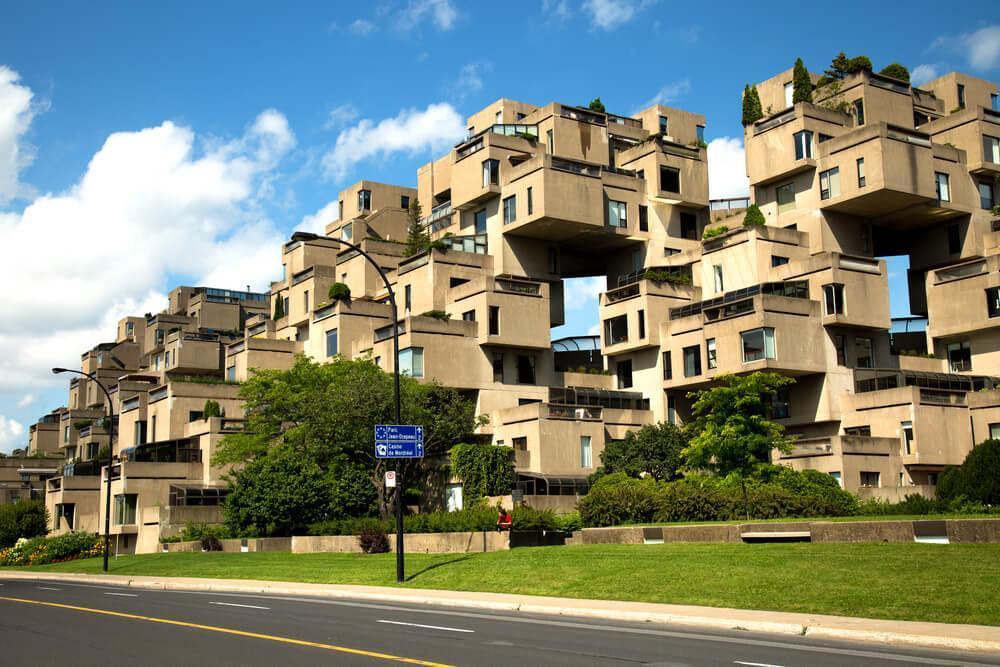
Pinkcandy / Shutterstock.com
Rotterdam, a town situated on the coast of Netherlands, is one of the most architecturally intriguing cities in the world.
And among its most innovative designs are the Cube Houses, which were designed in the 1970s by the Dutch architect Piet Blom.
The Kubuswoningen, as they’re known around Rotterdam, were built in an effort to revitalize the area of Oude Haven, which suffered tremendous destruction during World War II.
Blom came up with the idea to design tilted cube-shaped houses that were placed atop of hexagonal pylons. Each of these constructions represented a “tree”, so a cluster of cubic houses was meant to symbolize a residential forest.
The interior of cubic houses was specifically designed to maximize on space, and it contains a living room, toilet, kitchen, two bedrooms and a bathroom.
Habitat 67, Montreal
This architectural curiosity was designed in an attempt to explore solutions for fusing the quality and comfort of suburban housing in an urban, high-rise context.
It was the work of Israeli Canadian architect Moshe Safdie for the World Exposition of 1967.
This brutalist housing complex is composed of 354 identical prefabricated modules that were stacked on top of each other in various geometric forms.
The apartments are connected through pedestrian paths and bridges, as well as three vertical cores of elevators, which connect the 12 stories.
Even though the jury is still out on the success of ideas promoted by Habitat 67, this piece of Canadian architecture remains hugely influential and important for the debates on urban planning and high-density housing.
Burj Khalifa, Dubai
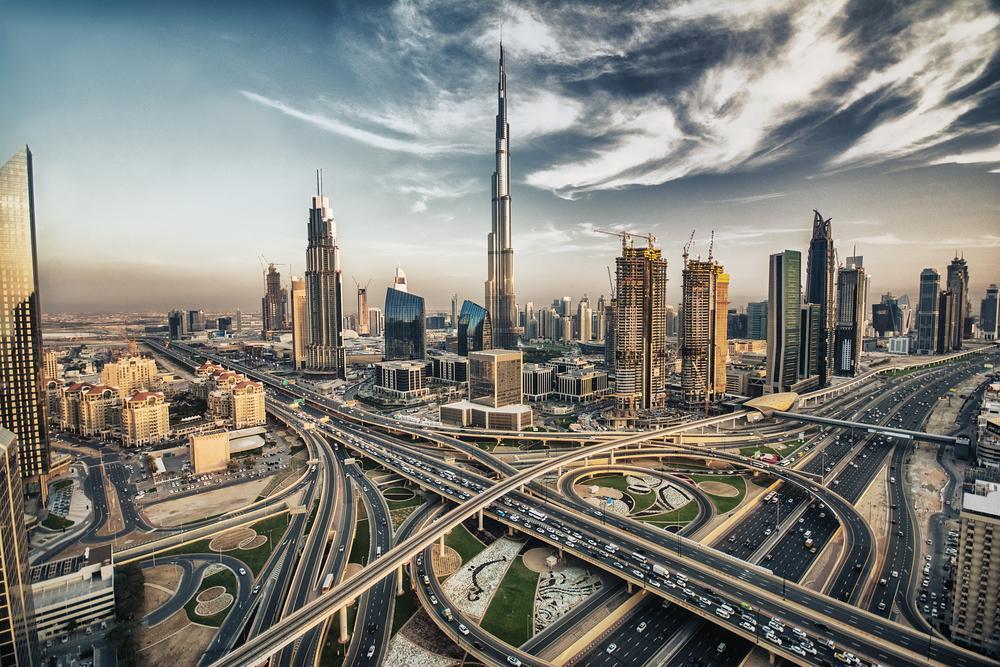
Relegating Taipei 101 to second spot, the Burj Khalifa is the world’s tallest man made building at an extraordinary 2,722 feet. Designed by Adrian Smith of Skidmore, Owings and Merrill, it is inspired by the Islamic architecture of the region.
Construction of this multi-use development first began in 2004, with overall completion in 2009. Holder of 17 world records, the Burj Khalifa stands tall and proud, and is definitely a must-see.
St. Basil’s Cathedral, Moscow
Nothing says “Russia” quite like the vast Red Square and its centerpiece, the Cathedral of Saint Basil.
And yet, due to its unique design, this instantly recognizable building is one of its kind in both Russia and the world.
The construction of St. Basil’s Cathedral began in the 16th century on the orders of Ivan the Terrible, a Russian Tsar, with an aim of commemorating he capture of Kazan and Astrakhan.
The shape of the building was imagined as bonfire reaching toward the sky. This effect was achieved by placing eight pillar-shaped churches around the central, ninth one.
The Cathedral’s signature onion-shaped domes acquired the vibrant colors and patterns in the 17th century.
Nowadays, the church operates as a museum and it represents one of the most visited tourist sights in Moscow.
National Centre for the Performing Arts, Beijing
Often referred to as the “Giant Egg”, the National Center for the Performing Arts in Beijing was inaugurated in 2007 with an aim to host operas, plays and concerts.
The NCPA was designed by the French architect Paul Andreu, who believed this structure would provide Beijing with an instantly recognizable landmark in contemporary style.
The building was constructed in the shape of ellipsoid dome using titanium and glass.
The entire structure is surrounded by a man-made lake that creates a serene, otherworldly setting for the building.
The interior and the NCPA’s grand hall can be reached via an 80-meter-long Underwater Corridor, which stretches beneath the artificial lake.
Taj Mahal, India
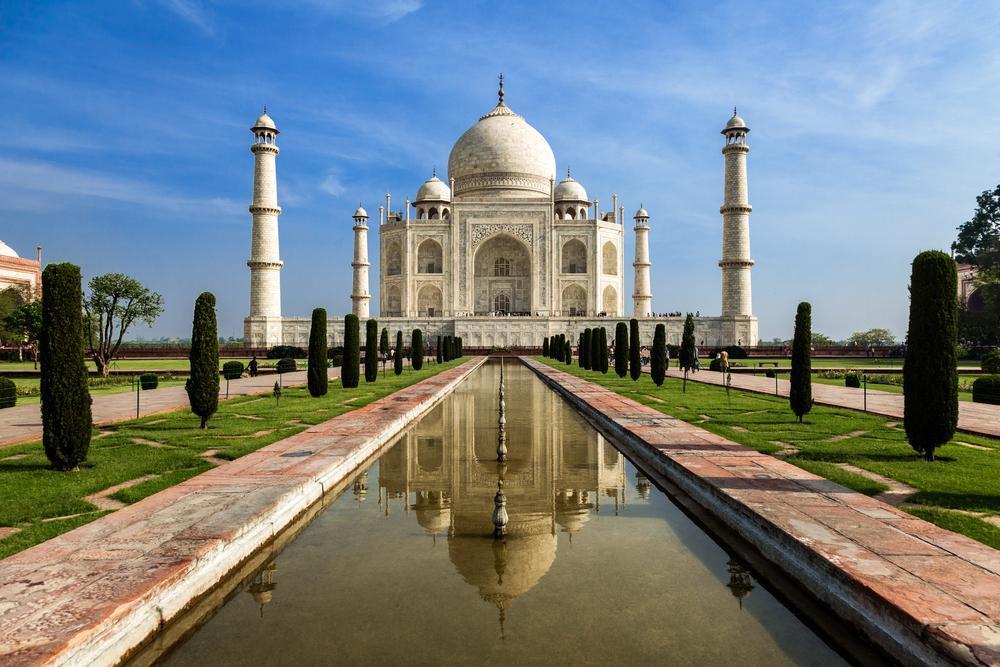
Shah Jahan’s ode to eternal love is one of the most recognized buildings in the world. History notes that the Mughal emperor commissioned the construction of this ivory mausoleum to house the body of his beloved wife, Mumtaz.
Occupying 42 acres, the Taj Mahal is designated as a UNESCO World Heritage site and continues to attract more than 7 million visitors annually.
Sagrada Familia, Barcelona
Sagrada Familia is an incomplete Roman Catholic church designed by the Catalan architectural mastermind, Antonin Gaudi.
Its construction began in 1882 under the supervision of Francisco Paula de Villar. A year later, he resigned and Gaudi took over the project, completely reimagining its form and continuing to oversee the works until his death in 1926.
The construction of the church had a very slow progress and, ultimately, the works were put to a halt due to the breakout of Spanish Civil War in the 1930s. Since then, the construction process was resumed and the entire building is projected to be completed by 2026.
As it stands currently, Sagrada Familia fuses several architectural styles, among which are Catalan Modernism, Spanish Late Gothic, Art Nouveau and Noucentisme.
It features three elaborately adorned facades, out of which the Nativity Façade is the most illustrative of Gaudi’s original design. It depicts various scenes taken from the Biblical story about the birth of Jesus.
Pyramids of Giza, Cairo
It is debatable whether any of buildings featured on this list would exist in the first place had it not been for the Pyramids of Giza, one of the oldest and most impressive architectural feats on the planet.
The Giza complex, which lies about 13 kilometers from the Egyptian capital of Cairo, is composed of the Great Pyramid of Giza, Pyramid of Khafre and the Pyramid of Menkaure, as well as the Great Sphinx, which lies in the eastern part of the site.
The Great Pyramid of Giza is the largest and the oldest of the three, as it was constructed around 2560 BC. Currently, its stands at 138 meters, although in ancient times it used to be 146 meters tall.
The pyramids were originally designed to treasure the remains of Pharaohs, ancient Egyptian rulers. It is also speculated they housed various objects which were believed to be needed for Pharaohs in the afterlife.
The Pyramids of Giza remain the only surviving Seven Wonders of the Ancient World.
Hagia Sophia, Istanbul
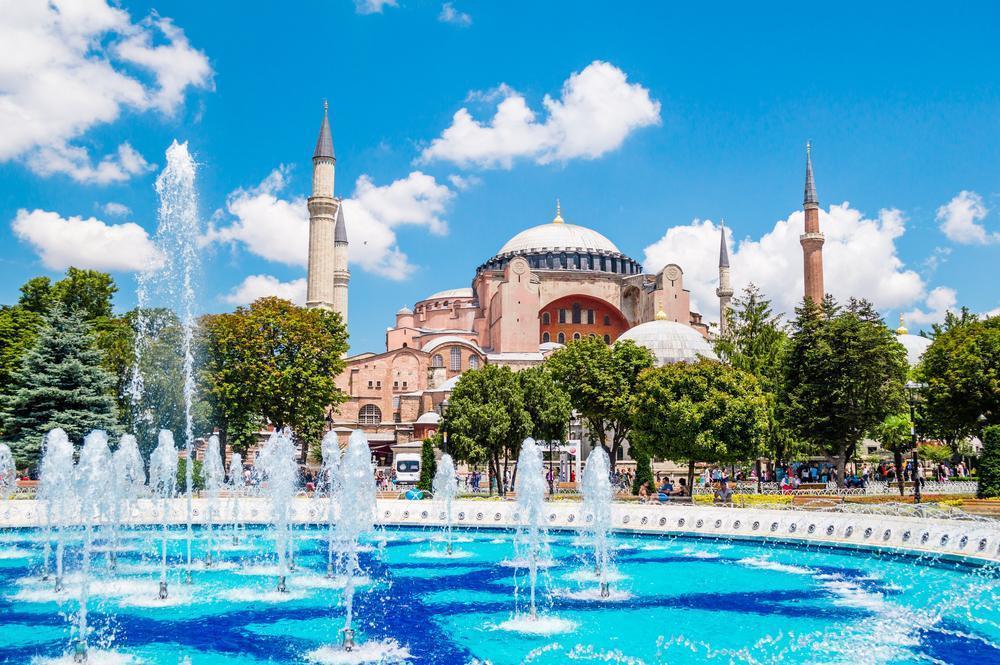
One of the most visited places on the planet, the Hagia Sophia has weathered many storms and seen many faces. Built in the year 537, it was first constructed as a Greek Orthodox basilica.
From 1453 to 1931, it was used as an imperial mosque. From 1935 to present day, it is a museum open to the public.
Not only is it a work of art, its cultural and historical value also makes it a visit of a lifetime.
Guggenheim Museum, Bilbao
Often considered to be one of the most innovative examples of contemporary architecture, the Guggenheim Museum of Bilbao was designed by Canadian American architect Frank Gehry.
Sprawling alongside the Nervion River, the museum was officially opened in 1997, allowing the visitors to explore some of the most famous works of Spanish and international artists within its walls.
The structure of the building relies on three materials – stone, glass and titanium – which form random-looking curves that give an appearance of a ship, a nod to Bilbao’s rich maritime past.
The resounding success of the bold style envisioned by Bilbao’s Guggenheim Museum has influenced a wave of architects around the world to continue implementing innovative, boundary-pushing designs.
Between astonishing architectural feats of the past eras and the innovative projects unveiled in recent years, the world of architecture is only becoming richer and more diverse. The fact that contemporary architects are constantly finding new ways to push boundaries and strive towards innovative, yet aesthetically appealing solutions makes us excited for all the designs we’ll get to see in the years to come.





Leave A Comment